 1989 Peugeot 309 (3C,3A facelift 1989) Dimensions, Size & Specs
1989 Peugeot 309 (3C,3A facelift 1989) Dimensions, Size & SpecsMeasurements of the 1989 Peugeot 309, engineered for optimal performance and comfort
| Dimensions | |
|---|---|
| Length: | 4050 mm159.4 in13.3 ft |
| Width: | 1630 mm64.2 in5.3 ft |
| Height: | 1380 mm54.3 in4.5 ft |
| Trunk Capacity: | 295 liter10.4 cu ft |
| Trunk Capacity (Max): | 615 liter21.7 cu ft |
| Weight Specifications | |
| Curb Weight: | 835-1000 kg1841-2205 lbs |
| Maximal permitted Weight: | 1275-1400 kg2811-3086 lbs |
| Tire Specifications | |
| Rims Size: |
|
| Tire Sizes: |
|
The Peugeot 309 (3C,3A facelift 1989) is a compact hatchback produced between 1989 and 1993. This generation showcases a balanced size with a length of 4050 mm (159.4 inches), width of 1630 mm (64.2 inches), and height of 1380 mm (54.3 inches), making it well-suited for urban and suburban driving. Despite its compact footprint, the 309 offers practical interior and cargo space. Its curb weight ranges between 835 and 1000 kilograms (1841 to 2205 lbs), depending on the specific model and equipment level, while its maximum weight capacity lies between 1275 and 1400 kilograms (2811 to 3086 lbs), indicating a solid build for the category. The luggage compartment provides 295 liters (10.4 cubic feet) of storage, expandable to 615 liters (21.7 cubic feet) with the rear seats folded, allowing for versatile cargo solutions. The vehicle rides on rim sizes primarily of 13 inches and offers a variety of tire options including 145/80 SR13, 165/70 SR13, 175/65 HR14, 165/70 TR13, 185/55 VR15, and 195/55 VR15, supporting a range of driving needs from everyday commuting to more spirited driving. This facelifted generation maintains Peugeot's reputation for combining style and practicality in a hatchback, ideal for drivers seeking efficient use of space without compromising on comfort or handling.
Discover the standout features that make the 1989 Peugeot 309 a leader in its class
Have a question? Please check our knowledgebase first.
The Peugeot 309 (3C, 3A facelift 1989) measures 4050 mm (approximately 159.4 inches) in length, 1630 mm (about 64.2 inches) in width, and 1380 mm (roughly 54.3 inches) in height. These dimensions provide a compact yet practical hatchback size typical for the late 1980s and early 1990s, making it suitable for urban driving and everyday use.
The curb weight of the Peugeot 309 facelift ranges from 835 kg to 1000 kg (approximately 1841 to 2205 lbs), with a maximum weight between 1275 kg and 1400 kg (around 2810 to 3086 lbs). This relatively lightweight profile contributes positively to fuel efficiency and agility, especially for a compact hatchback from this era. The lower weight also aids in responsive handling and acceleration, although exact performance largely depends on the engine variant. The maximum weight encompasses passengers and cargo capacities, meaning that when fully loaded, the car’s dynamics may slightly change but still remain manageable for daily use.
The Peugeot 309 from the 1989 facelift has a luggage capacity of 295 liters (approximately 10.4 cubic feet) with the rear seats in their standard position. When the rear seats are folded down, the usable cargo space increases significantly to 615 liters (about 21.7 cubic feet). This flexibility allows for efficient transport of larger items, enhancing the practicality of the hatchback design for families or users needing extra storage on demand.
Yes, the Peugeot 309 facelift fits comfortably into a standard residential garage. With a length of 4050 mm (159.4 inches) and width of 1630 mm (64.2 inches), it is smaller than the average garage size, which typically ranges around 5 to 6 meters (16 to 20 feet) in width and length. Even when considering mirrors and potential slight maneuvering space, parking the 309 inside a standard garage is convenient, making it well-suited for urban homeowners or apartment dwellers who rely on garage storage.
The Peugeot 309 facelift commonly uses rim sizes of 13 inches, paired with tire options including 145/80 SR13, 165/70 SR13, 175/65 HR14, 165/70 TR13, 185/55 VR15, and 195/55 VR15. These size variations allow for a balance between comfort and handling. Smaller tires and rims such as 145/80 SR13 generally improve ride comfort and absorb road imperfections better, while larger tires like 195/55 VR15 provide enhanced road grip and sportier handling characteristics. This range lets owners tailor their vehicle’s driving dynamics to regional road conditions or personal preference.
The 1989 facelift of the Peugeot 309 kept the core dimensions largely consistent with the original model introduced earlier in the 1980s. Both versions maintain a compact hatchback footprint with very similar length, width, and height to preserve familiar driving and parking traits. The facelift primarily focused on cosmetic and mechanical updates rather than dimensional changes, so the 4050 mm length and 1630 mm width remain mostly unchanged. This ensures continuity for users familiar with the predecessor while incorporating modernized design and internal improvements.
In comparison with similar hatchbacks from its time, such as the Volkswagen Golf Mk2 or Ford Fiesta Mk3, the Peugeot 309 facelift offers competitive exterior dimensions with a length of 4050 mm (159.4 inches) and a width of 1630 mm (64.2 inches). Its luggage space of 295 liters (10.4 cubic feet) with seats up, and 615 liters (21.7 cubic feet) folded down, makes it notably practical within the compact segment. While it may be slightly narrower than some rivals, its lightweight design and flexible cargo capacity make the 309 a versatile option for city and suburban drivers seeking a balance of size and functionality.
The Peugeot 309 facelift, with its relatively compact exterior size, offers a comfortable interior typical of late 1980s hatchbacks. While it prioritizes efficient use of space, the cabin comfortably accommodates five passengers with adequate headroom and legroom for its category. The 1380 mm (54.3 inches) height provides enough vertical space, and the hatchback design enhances rear seat passenger visibility and access. Though not spacious by modern standards, the interior layout optimizes passenger comfort well within the framework of a compact family car from that era.
The Peugeot 309 facelift (1989-1993) combines a well-balanced compact size with notable practicality. It offers ample luggage space especially with rear seats folded, lightweight construction for good fuel efficiency, and the adaptability of several tire/rim options accommodating different driving preferences. Its design refresh improved aesthetics and mechanical reliability over earlier models. Compared to other hatchbacks of its class, it stands out for offering a good balance of size, economy, and space in a practical, city-friendly package, making it appealing for urban and small family use.
The 1989 Peugeot 309 facelift played a formative role in refining Peugeot's approach to compact hatchbacks. Its modest but practical dimensions set a benchmark for usability, balancing small exterior footprints with interior flexibility and efficient cargo capacity. The success of this generation helped Peugeot evolve future models like the 306 and 307 with similar principles — emphasizing comfort, urban practicality, and adaptable storage. Design-wise, the facelift introduced subtle modern touches that influenced the clean, functional aesthetic of Peugeot hatchbacks throughout the 1990s and early 2000s.
Discover similar sized cars.
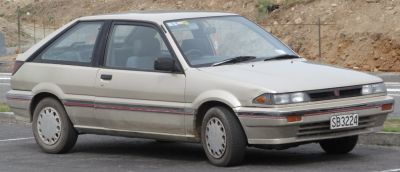
| Production: | 1986-1990 |
|---|---|
| Model Year: | 1986 |
| Length: | 4035 mm158.9 in |
| Width: | 1655 mm65.2 in |
| Height: | 1380 mm54.3 in |
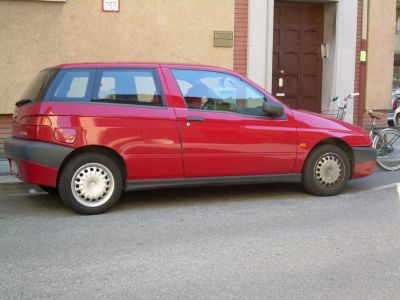
| Production: | 1997-1999 |
|---|---|
| Model Year: | 1997 |
| Length: | 4093 mm161.1 in |
| Width: | 1712 mm67.4 in |
| Height: | 1431 mm56.3 in |
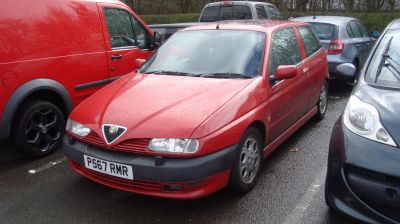
| Production: | 1994-1996 |
|---|---|
| Model Year: | 1994 |
| Length: | 4093 mm161.1 in |
| Width: | 1712 mm67.4 in |
| Height: | 1427 mm56.2 in |
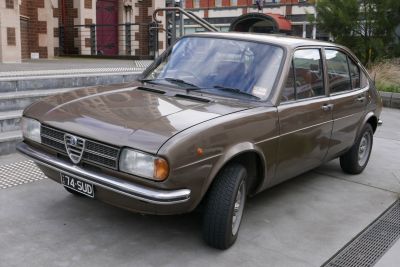
| Production: | 1972-1984 |
|---|---|
| Model Year: | 1972 |
| Length: | 3890-3995 mm153.1-157.3 in |
| Width: | 1590 mm62.6 in |
| Height: | 1370 mm53.9 in |
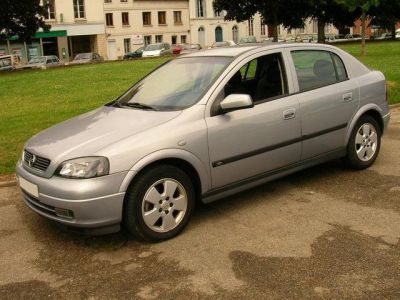
| Production: | 2002-2004 |
|---|---|
| Model Year: | 2002 |
| Length: | 4110 mm161.8 in |
| Width: | 1967 mm77.4 in |
| Height: | 1425 mm56.1 in |
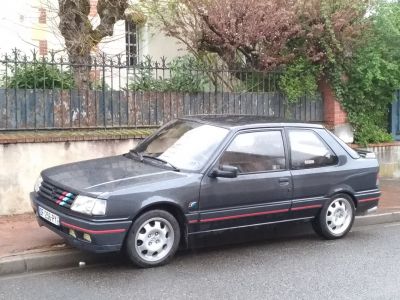
| Production: | 1989-1993 |
|---|---|
| Model Year: | 1989 |
| Length: | 4051 mm159.5 in |
| Width: | 1630 mm64.2 in |
| Height: | 1380 mm54.3 in |
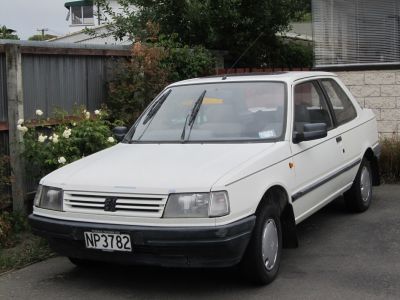
| Production: | 1985-1989 |
|---|---|
| Model Year: | 1985 |
| Length: | 4051 mm159.5 in |
| Width: | 1628 mm64.1 in |
| Height: | 1380 mm54.3 in |
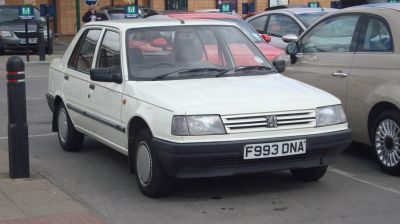
| Production: | 1985-1989 |
|---|---|
| Model Year: | 1985 |
| Length: | 4051 mm159.5 in |
| Width: | 1628 mm64.1 in |
| Height: | 1380 mm54.3 in |
